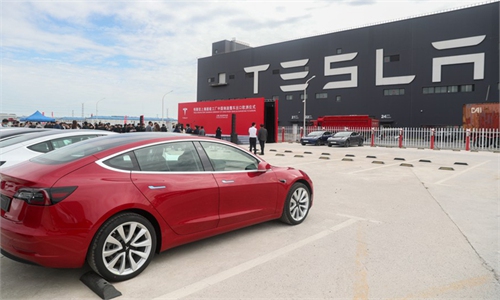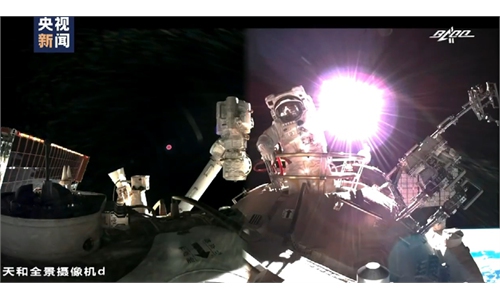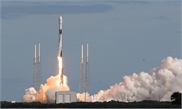IN-DEPTH / IN-DEPTH
After Starlink satellites’ irregular operations, SpaceX’s connection with US military arouses concerns
The two near-misses between the Starlink satellites by the US' SpaceX and the China Space Station, caused by the Starlink satellites' descent into lower orbits without advance notice, have caused anger among the Chinese public and attracted greater attention from the international community. SpaceX and its founder Elon Musk haven't made any public response specific to the incidents and China's concern over them.
This is not the first time that Starlink has come close to causing an accident in space or cause trouble for people on Earth. Since it launched the first batch of satellites in May 2019, many organizations and individuals across the world have complained about Elon Musk's ambitious project for its risks of interfering with astronomical research, colliding with other satellites or space crafts, and creating dangerous space debris.
Worse still, Starlink and SpaceX, which announced to launch as many as 42,000 satellites into orbit, have reportedly initiated frequent instances of cooperation with the US military. Observers worry about this "space enclosure movement" of SpaceX and the Pentagon and say that it can pose a hidden danger to space missions of other countries, and may even threaten global security.
"It is a certain fact that they will increase the actual combat capability of US' space force and other military services," Song Zhongping, a Chinese military and aerospace industry expert, told the Global Times.

Starlink, as operated by SpaceX, is a satellite constellation development project meant to provide satellite Internet access across the globe. Under the project, Musk plans to launch 42,000 small satellites over the next few decades to orbit the earth.
So far some 1,900 Starlink satellites have been sent into space. Although the number is less than a twentieth of Musk's final goal, these satellites have become troublemakers in the eyes of many. The satellites' two close encounters with the China Space Station separately on July 1 and October 21, 2021, for instance, endangered the safety of Chinese taikonauts and forced China's Tiangong Space Station to "implement preventive collision avoidance control," according to a note that the Permanent Mission of China to the United Nations (Vienna) addressed to the UN Secretary-General.
The autonomous collision avoidance system, equipped by Starlink satellites as SpaceX claimed, seemed not to work in the two incidents. In those cases, "it was highly irresponsible for Starlink satellites to force other spacecraft to institute collision avoidance," Yang Yuguang, Vice Chair of Space Transportation Committee for International Astronautical Federation, told the China News Agency on December 29.
"The possibility that these satellites can be used to test the space perception capability of the Chinese space industry cannot be ruled out," Huang Zhicheng, a senior expert on aerospace science and technology, told the Global Times.
Huang noted that the Starlink satellite, which normally operates at an orbital altitude of 550 kilometers, suddenly descended its orbit and maneuvered to an average altitude of 382 kilometers, and then continued to operate at this altitude, posing a threat to the Chinese Space Station, possibly to enhance the communication performance of the satellite constellation in the local area, or to test whether the Chinese side would accurately grip their actions.
Technically, it is environmentally unfriendly and unnecessary for Starlink to launch as many as more than 40,000 small satellites, which can be replaced with several thousand larger satellites, aerospace industry insiders told the Global Times. "Look at China's Hongyan satellite constellation; it is composed of only several hundred satellites but can build similar [communication systems]," Song said.
"Musk has built the satellite constellation with so many small, low-cost satellites. I don't think that can be a durable [system]," Song added. "And many of the 42,000 satellites are actually back-ups for each other, which is completely unnecessary."
Besides, the more than 1,900 Starlink satellites that have been launched have seriously interfered with astronomers' scientific observations. Scientists in different countries are increasingly complaining about the Starlink program, because the telescopes designed to capture images of distant objects require long exposures, but when Starlink satellites that use reflective materials pass through the lens' field of view in the exposure, they leave long streaks on image.
"The train of Starlink satellites lasted for over 5 minutes! Rather depressing," an astronomer at the Cerro Tololo Inter-American Observatory in Chile complained on Twitter in November 2019 that one of their observation images was heavily disrupted by the transit of at least 19 satellites from Starlink satellites.
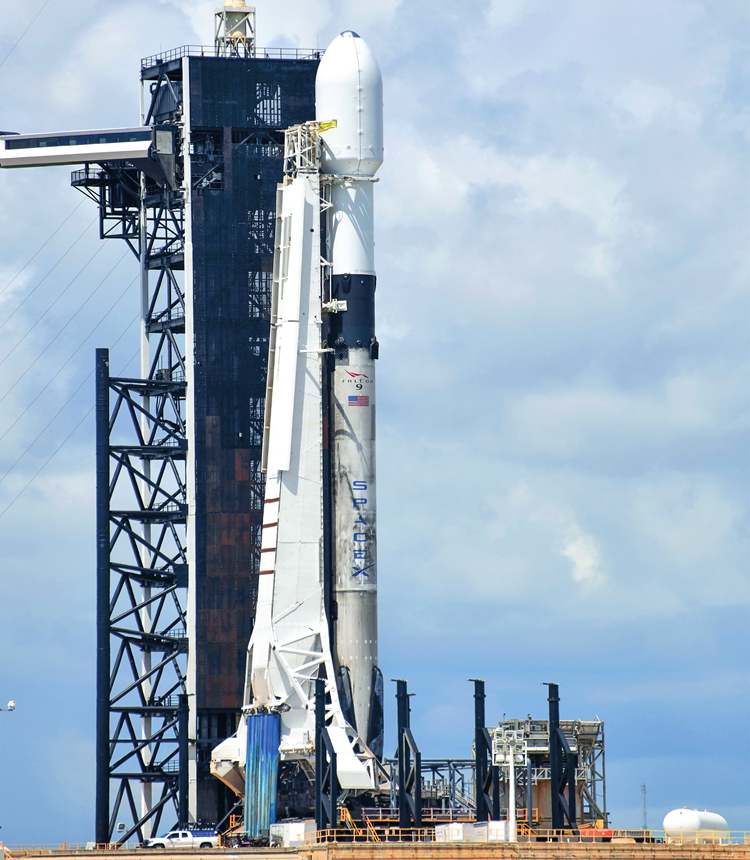
US military behind debacle
Although SpaceX is a private enterprise, observers found that the firm and its Starlink project have extensive and deep cooperation with the US military. Back in September 2018, SpaceX's executive, Gwynne Shotwell, made comments that the company would launch weapons into space "for the defense of the United States," according to the Daily Mail.
In October 2020, the US military said it planned to work with SpaceX in building a rocket "capable of delivering 80 metric tons of cargo anywhere in the world in 60 minutes," reported Business Insider that month.
The connection between SpaceX and the US military makes more people start to worry about what exactly the increasing number of Starlink satellites overhead is doing.
Huang pointed out that Starlink satellites not only threaten other countries' spacecrafts during general operations, but also the US military is likely to use these satellites for espionage missions to gather intelligence against other countries' spacecrafts.
In late 2018, SpaceX reportedly won a $28.7-million contract from the US Air Force for experiments in data connectivity involving ground sites, aircraft, and space assets. The contract "makes clear that the US military is interested in taking advantage of the global broadband access that Starlink and other satellite constellations in low Earth orbit could provide," wrote GeekWire in December 2018. In March 2021, CNBC reported that SpaceX was preparing to "further test its Starlink satellite internet in a demonstration for the US Air Force."
The US Army has experiences using Starlink broadband to move data across military networks as well. It signed an agreement with SpaceX in May 2020 to try out the Starlink service for three years, according to a SpaceNews report that month.
With cooperation like these, Starlink can largely support the US military by helping solve communication problems, especially data communications, Song said.
Huang noted that the line between military and civilian use of the Starlink program is very blurred and SpaceX can certainly assist the US military in future wars, posing a greater threat to the security of other countries.
Space technology is an important area of the competition between the US and China, the US' current effort to help SpaceX is an attempt to regain its edge in communications and fill the gap in 5G technologies, Huang said.
Starlink satellites are controllable, meaning they have the capacity to aim for and crash into space stations or spacecrafts if installed with detection system, Song noted. "In other words, these small, cheap, and densely distributed satellites can be commanded by the ground to intentionally attack other countries' spacecrafts, like the 'Brilliant Pebbles' of former US President Ronald Reagan's 'Star Wars program,'" Song told the Global Times.
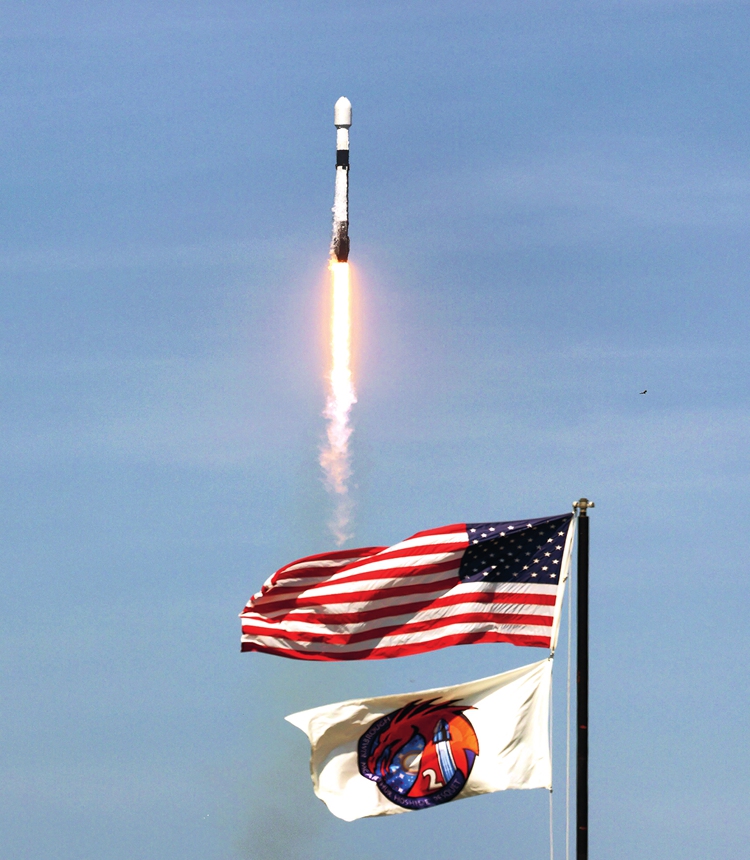
Beware of space hegemony
With more and more Starlink satellites scheduled to be sent to space, the international community calls for the US and its SpaceX to more actively respond to global insiders' concerns about the project. Regrettably, both Musk and American officials have seldom made timely and persuasive responses.
Observers told the Global Times that current international laws and conventions are hardly binding with regards to the US companies like SpaceX, which makes the a US hegemonic power in space by virtue of its technological advantages.
There are a limited number of international treaties on outer space exploitation, most of which were adopted in the 1960s and 1970s. The International Telecommunication Union (ITU) has a set of technical regulations for coordinating the application and allocation of satellite orbits and radio frequency band resources among countries, but these regulations only state that countries should use orbital resources in an equal, reasonable, and cost-effective manner. There are no clear regulations for dealing with arbitrary orbital changes that affect other countries' aircraft, such as the "Starlink" satellite, expert noted.
Under the framework of the United Nations, the militarization and weaponization development of outer space have been discussed for many years, but all countries concerned are talking their own word. The US takes the opportunity of "regulatory vacuum" to grab resources barbarously regardless of the opposition of other countries, Huang noted. "This process is full of hegemonic acts," he added.
The US claims to be a strong advocate for the concept of "responsible behavior in outer space", but it disregarded its (1967 Outer Space) Treaty obligations and posed a grave threat to the safety of astronauts, Chinese Foreign Ministry spokesperson criticized in late December, after China reported two near-misses in space caused by Starlink satellites.
"Exploration and the peaceful use of outer space is a common cause for all humanity," stressed spokesperson Zhao Lijian. "The US should respect international order in space based on international law…take prompt measures to prevent such incidents from recurring, and act responsibly to safeguard the safety of in-orbit astronauts, and the safe and steady operation of space facilities."
This is not the first time that Starlink has come close to causing an accident in space or cause trouble for people on Earth. Since it launched the first batch of satellites in May 2019, many organizations and individuals across the world have complained about Elon Musk's ambitious project for its risks of interfering with astronomical research, colliding with other satellites or space crafts, and creating dangerous space debris.
Worse still, Starlink and SpaceX, which announced to launch as many as 42,000 satellites into orbit, have reportedly initiated frequent instances of cooperation with the US military. Observers worry about this "space enclosure movement" of SpaceX and the Pentagon and say that it can pose a hidden danger to space missions of other countries, and may even threaten global security.
"It is a certain fact that they will increase the actual combat capability of US' space force and other military services," Song Zhongping, a Chinese military and aerospace industry expert, told the Global Times.

Elon Musk, the founder of SpaceX, speaks about the Starlink project on June 29, 2021 in Barcelona, Spain. Photo: VCG
'Troublemakers'Starlink, as operated by SpaceX, is a satellite constellation development project meant to provide satellite Internet access across the globe. Under the project, Musk plans to launch 42,000 small satellites over the next few decades to orbit the earth.
So far some 1,900 Starlink satellites have been sent into space. Although the number is less than a twentieth of Musk's final goal, these satellites have become troublemakers in the eyes of many. The satellites' two close encounters with the China Space Station separately on July 1 and October 21, 2021, for instance, endangered the safety of Chinese taikonauts and forced China's Tiangong Space Station to "implement preventive collision avoidance control," according to a note that the Permanent Mission of China to the United Nations (Vienna) addressed to the UN Secretary-General.
The autonomous collision avoidance system, equipped by Starlink satellites as SpaceX claimed, seemed not to work in the two incidents. In those cases, "it was highly irresponsible for Starlink satellites to force other spacecraft to institute collision avoidance," Yang Yuguang, Vice Chair of Space Transportation Committee for International Astronautical Federation, told the China News Agency on December 29.
"The possibility that these satellites can be used to test the space perception capability of the Chinese space industry cannot be ruled out," Huang Zhicheng, a senior expert on aerospace science and technology, told the Global Times.
Huang noted that the Starlink satellite, which normally operates at an orbital altitude of 550 kilometers, suddenly descended its orbit and maneuvered to an average altitude of 382 kilometers, and then continued to operate at this altitude, posing a threat to the Chinese Space Station, possibly to enhance the communication performance of the satellite constellation in the local area, or to test whether the Chinese side would accurately grip their actions.
Technically, it is environmentally unfriendly and unnecessary for Starlink to launch as many as more than 40,000 small satellites, which can be replaced with several thousand larger satellites, aerospace industry insiders told the Global Times. "Look at China's Hongyan satellite constellation; it is composed of only several hundred satellites but can build similar [communication systems]," Song said.
"Musk has built the satellite constellation with so many small, low-cost satellites. I don't think that can be a durable [system]," Song added. "And many of the 42,000 satellites are actually back-ups for each other, which is completely unnecessary."
Besides, the more than 1,900 Starlink satellites that have been launched have seriously interfered with astronomers' scientific observations. Scientists in different countries are increasingly complaining about the Starlink program, because the telescopes designed to capture images of distant objects require long exposures, but when Starlink satellites that use reflective materials pass through the lens' field of view in the exposure, they leave long streaks on image.
"The train of Starlink satellites lasted for over 5 minutes! Rather depressing," an astronomer at the Cerro Tololo Inter-American Observatory in Chile complained on Twitter in November 2019 that one of their observation images was heavily disrupted by the transit of at least 19 satellites from Starlink satellites.

A SpaceX Falcon 9 rocket is ready for launch on August 31, 2020.
US military behind debacle
Although SpaceX is a private enterprise, observers found that the firm and its Starlink project have extensive and deep cooperation with the US military. Back in September 2018, SpaceX's executive, Gwynne Shotwell, made comments that the company would launch weapons into space "for the defense of the United States," according to the Daily Mail.
In October 2020, the US military said it planned to work with SpaceX in building a rocket "capable of delivering 80 metric tons of cargo anywhere in the world in 60 minutes," reported Business Insider that month.
The connection between SpaceX and the US military makes more people start to worry about what exactly the increasing number of Starlink satellites overhead is doing.
Huang pointed out that Starlink satellites not only threaten other countries' spacecrafts during general operations, but also the US military is likely to use these satellites for espionage missions to gather intelligence against other countries' spacecrafts.
In late 2018, SpaceX reportedly won a $28.7-million contract from the US Air Force for experiments in data connectivity involving ground sites, aircraft, and space assets. The contract "makes clear that the US military is interested in taking advantage of the global broadband access that Starlink and other satellite constellations in low Earth orbit could provide," wrote GeekWire in December 2018. In March 2021, CNBC reported that SpaceX was preparing to "further test its Starlink satellite internet in a demonstration for the US Air Force."
The US Army has experiences using Starlink broadband to move data across military networks as well. It signed an agreement with SpaceX in May 2020 to try out the Starlink service for three years, according to a SpaceNews report that month.
With cooperation like these, Starlink can largely support the US military by helping solve communication problems, especially data communications, Song said.
Huang noted that the line between military and civilian use of the Starlink program is very blurred and SpaceX can certainly assist the US military in future wars, posing a greater threat to the security of other countries.
Space technology is an important area of the competition between the US and China, the US' current effort to help SpaceX is an attempt to regain its edge in communications and fill the gap in 5G technologies, Huang said.
Starlink satellites are controllable, meaning they have the capacity to aim for and crash into space stations or spacecrafts if installed with detection system, Song noted. "In other words, these small, cheap, and densely distributed satellites can be commanded by the ground to intentionally attack other countries' spacecrafts, like the 'Brilliant Pebbles' of former US President Ronald Reagan's 'Star Wars program,'" Song told the Global Times.

A SpaceX Falcon 9 lifts off on May 4, 2021. Photo: VCG
Beware of space hegemony
With more and more Starlink satellites scheduled to be sent to space, the international community calls for the US and its SpaceX to more actively respond to global insiders' concerns about the project. Regrettably, both Musk and American officials have seldom made timely and persuasive responses.
Observers told the Global Times that current international laws and conventions are hardly binding with regards to the US companies like SpaceX, which makes the a US hegemonic power in space by virtue of its technological advantages.
There are a limited number of international treaties on outer space exploitation, most of which were adopted in the 1960s and 1970s. The International Telecommunication Union (ITU) has a set of technical regulations for coordinating the application and allocation of satellite orbits and radio frequency band resources among countries, but these regulations only state that countries should use orbital resources in an equal, reasonable, and cost-effective manner. There are no clear regulations for dealing with arbitrary orbital changes that affect other countries' aircraft, such as the "Starlink" satellite, expert noted.
Under the framework of the United Nations, the militarization and weaponization development of outer space have been discussed for many years, but all countries concerned are talking their own word. The US takes the opportunity of "regulatory vacuum" to grab resources barbarously regardless of the opposition of other countries, Huang noted. "This process is full of hegemonic acts," he added.
The US claims to be a strong advocate for the concept of "responsible behavior in outer space", but it disregarded its (1967 Outer Space) Treaty obligations and posed a grave threat to the safety of astronauts, Chinese Foreign Ministry spokesperson criticized in late December, after China reported two near-misses in space caused by Starlink satellites.
"Exploration and the peaceful use of outer space is a common cause for all humanity," stressed spokesperson Zhao Lijian. "The US should respect international order in space based on international law…take prompt measures to prevent such incidents from recurring, and act responsibly to safeguard the safety of in-orbit astronauts, and the safe and steady operation of space facilities."

